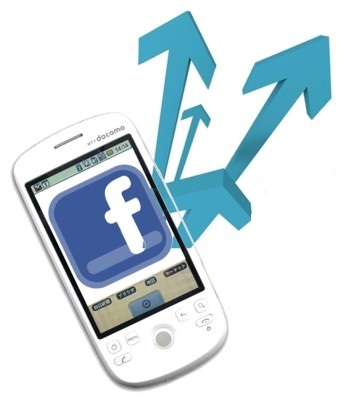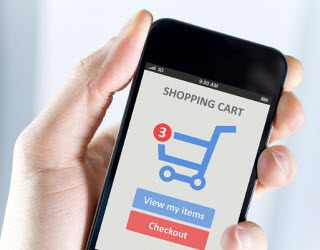Facebook continues adding Buy buttons to advertisements
Facebook is looking to play a larger role in the in-app retail space, introducing a “Buy” button on advertisements that are featured on its social networking site. The company sees great promise in the mobile commerce space, but has yet to find any success therein. While many consumers access Facebook and other social media sites through their mobile devices, they have yet to rely on these platforms when it comes to shopping.
Retailers may benefit from new mobile shopping features being tested by Facebook
Facebook is not only including a Buy button on all its Canvas advertisements, it is also rolling out new features that will make it easier for retailers to sell products on their Facebook pages. These features are meant to give retailers a better way to engage mobile consumers, who are beginning to shop online more regularly with their smartphones and tablets. New mobile shopping features are currently being tested in the United States and Facebook has yet to announce a point where these features will see a worldwide launch.
Instagram is already finding some success in the mobile commerce space with its own Buy buttons
 Facebook’s Instagram has already become involved in the mobile commerce space. Instagram has rolled out Buy buttons on its advertisement formats, which have already proven quite effective for retailers. The social network is also relying heavily on consumer-driven discovery, with many Instagram users exposing their friends to new products that they may not have known existed before. This discovery is leading to more frequent mobile shopping among consumers, especially among those using social networks.
Facebook’s Instagram has already become involved in the mobile commerce space. Instagram has rolled out Buy buttons on its advertisement formats, which have already proven quite effective for retailers. The social network is also relying heavily on consumer-driven discovery, with many Instagram users exposing their friends to new products that they may not have known existed before. This discovery is leading to more frequent mobile shopping among consumers, especially among those using social networks.
Mobile commerce is growing quickly in the Asia Pacific region, with social networks playing a more influential role therein
Mobile commerce is experience strong growth, particularly in the Asia Pacific region, where smartphone penetration is accelerating. In Hong Kong alone, mobile shopping has grown by 35% since 2012. Social networks are expected to play a much larger role in the continued growth of mobile commerce in the coming years, as consumers and retailers will rely more heavily on these platforms.
A new report from the research firm has shown that by the close of 2016, sales will break the $142 billion mark.
Forrester Research has now released a new report that it has entitled its “U.S. Mobile Phone and Tablet Commerce Forecast, 2015 to 2020” and within it, it has shown that the close of this year will break $115 billion in transactions and they will only head upward from there.
The report also goes on to say that by the end of next year, m-commerce sales will explode past $142 billion.
Principal analyst at Forrester Research, Sucharita Mulpuru, who is also the firm’s vice president, explained that “We project that mobile phones will generate 15 percent of eCommerce sales by 2020, and tablets will generate 33 percent of eCommerce sales in the same time frame.” She also explained that as smartphones are rapidly becoming a main computing device for many consumers, it is surprising that those mobile commerce figures aren’t even higher than they already are.
The report from Forrester has placed the spotlight on many of the challenges creating a barrier to mobile commerce.
 Although merchants have said that about a third of its current online traffic comes from mobile devices, the number of actual sales that are occurring over smartphones and tablets is only 11 percent. This shows that while people are visiting sites to check out brands, products, and stores, they aren’t actually using those same gadgets to make their purchases. When they do buy, it’s more likely to be in person or over a laptop.
Although merchants have said that about a third of its current online traffic comes from mobile devices, the number of actual sales that are occurring over smartphones and tablets is only 11 percent. This shows that while people are visiting sites to check out brands, products, and stores, they aren’t actually using those same gadgets to make their purchases. When they do buy, it’s more likely to be in person or over a laptop.
Mulpuru stated that “Shoppers experience slow download speeds on smartphones in particular, and few retailers have managed to increase their mobile conversion rates over the years.” Most of the sales that are occurring over m-commerce are happening within three primary categories, which means that the majority of sectors remain underpenetrated and still have a great deal of unused potential. Those categories will need to go a long way before they will be able to experience success over that channel.
At the same time, there are also retailers who have been successful by way of mobile commerce innovations. In Forrester’s report, the firm explained that eBay and Amazon, combined, take in about one third of all shopping that is completed over smartphones and tablets in the United States.
 Facebook’s Instagram has already become involved in the mobile commerce space. Instagram has rolled out Buy buttons on its advertisement formats, which have already proven quite effective for retailers. The social network is also relying heavily on consumer-driven discovery, with many Instagram users exposing their friends to new products that they may not have known existed before. This discovery is leading to more frequent mobile shopping among consumers, especially among those using social networks.
Facebook’s Instagram has already become involved in the mobile commerce space. Instagram has rolled out Buy buttons on its advertisement formats, which have already proven quite effective for retailers. The social network is also relying heavily on consumer-driven discovery, with many Instagram users exposing their friends to new products that they may not have known existed before. This discovery is leading to more frequent mobile shopping among consumers, especially among those using social networks.
 Although merchants have said that about a third of its current online traffic comes from mobile devices, the number of actual sales that are occurring over smartphones and tablets is only 11 percent. This shows that while people are visiting sites to check out brands, products, and stores, they aren’t actually using those same gadgets to make their purchases. When they do buy, it’s more likely to be in person or over a laptop.
Although merchants have said that about a third of its current online traffic comes from mobile devices, the number of actual sales that are occurring over smartphones and tablets is only 11 percent. This shows that while people are visiting sites to check out brands, products, and stores, they aren’t actually using those same gadgets to make their purchases. When they do buy, it’s more likely to be in person or over a laptop.